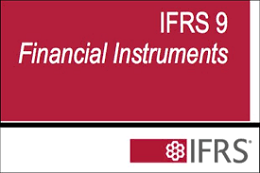
IASB confirms accounting treatment for debt modifications under IFRS 9
2017-09-21 | IFRS |Issue
In July 2017 the IASB ("Board") confirmed the accounting for modifications of financial liabilities under IFRS 9. That is, when a financial liability measured at amortised cost is modified without this resulting in derecognition, a gain or loss should be recognised in profit or loss. The gain or loss is calculated as the difference between the original contractual cash flows and the modified cash flows discounted at the original effective interest rate. (IFRS 9, paragraph B5.4.6)
This is consistent with the tentative agenda decision of the IFRS Intepretations Committee ("IC"). However, the IC decided not to finalise this decision on the grounds that an agenda decision was not an appropriate mechanism to address the issue. The Board has decided instead to amend the Basis for Conclusions to IFRS 9 to highlight that the accounting under IFRS 9 is clear and that no changes to the standard are required.
Impact
This will impact all preparers, particularly those applying a different policy for recognising gains and losses today. Under IAS 39, Financial instruments: Recognition and measurement ("IAS 39"), many preparers did not recognise a gain or loss at the date of modification of a financial liability. Instead, the difference between the original and modified cash flows was amortised over the remaining term of the modified liability by re-calculating the effective interest rate. This will need to change on transition to IFRS 9 because the accounting will change.
Whilst it is not expected that entities will be required to change their existing accounting policy under IAS 39, the impact on transition to IFRS 9 should be considered. IFRS 9 is required to be applied retrospectively, therefore modification gains and losses arising from financial liabilities that are still recognised at the date of initial application (e.g. 1 January 2018 for calendar year end companies) would need to be calculated and adjusted through opening retained earnings on transition.
Where can entities get more information
The Board will also consider other ways to highlight this matter, for example within a webcast.
For more information refer to the IASB podcast:

IASB confirms accounting treatment for debt modifications under IFRS 9
2017-09-21 | IFRS |Issue
In July 2017 the IASB ("Board") confirmed the accounting for modifications of financial liabilities under IFRS 9. That is, when a financial liability measured at amortised cost is modified without this resulting in derecognition, a gain or loss should be recognised in profit or loss. The gain or loss is calculated as the difference between the original contractual cash flows and the modified cash flows discounted at the original effective interest rate. (IFRS 9, paragraph B5.4.6)
This is consistent with the tentative agenda decision of the IFRS Intepretations Committee ("IC"). However, the IC decided not to finalise this decision on the grounds that an agenda decision was not an appropriate mechanism to address the issue. The Board has decided instead to amend the Basis for Conclusions to IFRS 9 to highlight that the accounting under IFRS 9 is clear and that no changes to the standard are required.
Impact
This will impact all preparers, particularly those applying a different policy for recognising gains and losses today. Under IAS 39, Financial instruments: Recognition and measurement ("IAS 39"), many preparers did not recognise a gain or loss at the date of modification of a financial liability. Instead, the difference between the original and modified cash flows was amortised over the remaining term of the modified liability by re-calculating the effective interest rate. This will need to change on transition to IFRS 9 because the accounting will change.
Whilst it is not expected that entities will be required to change their existing accounting policy under IAS 39, the impact on transition to IFRS 9 should be considered. IFRS 9 is required to be applied retrospectively, therefore modification gains and losses arising from financial liabilities that are still recognised at the date of initial application (e.g. 1 January 2018 for calendar year end companies) would need to be calculated and adjusted through opening retained earnings on transition.
Where can entities get more information
The Board will also consider other ways to highlight this matter, for example within a webcast.
For more information refer to the IASB podcast:
IFRS bölümünün son xəbərləri |

